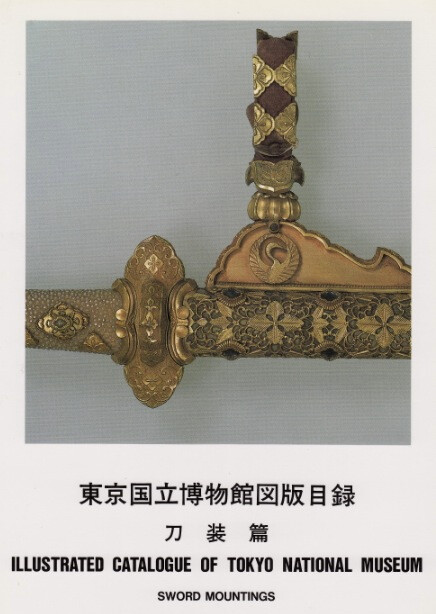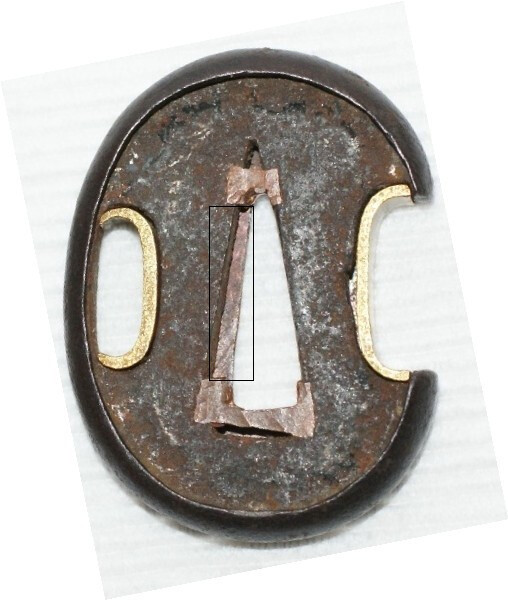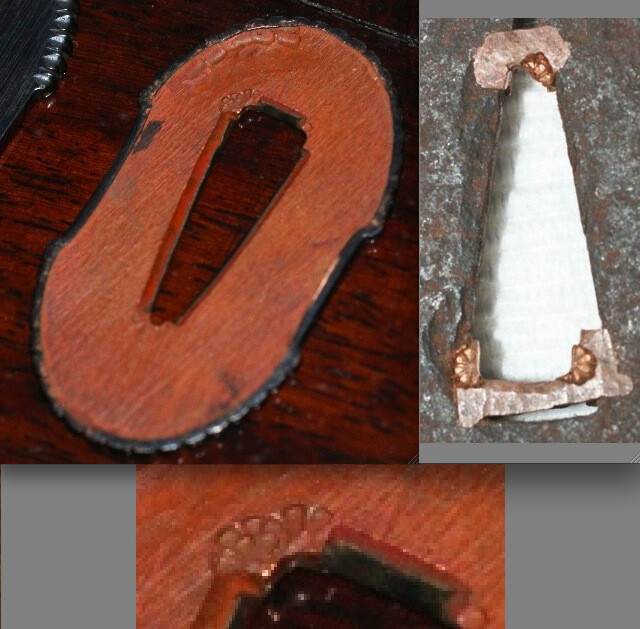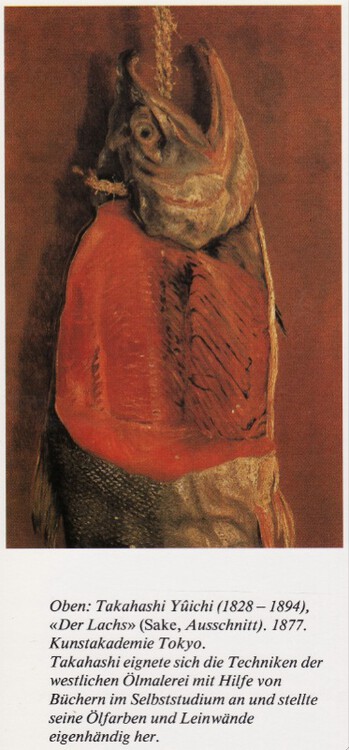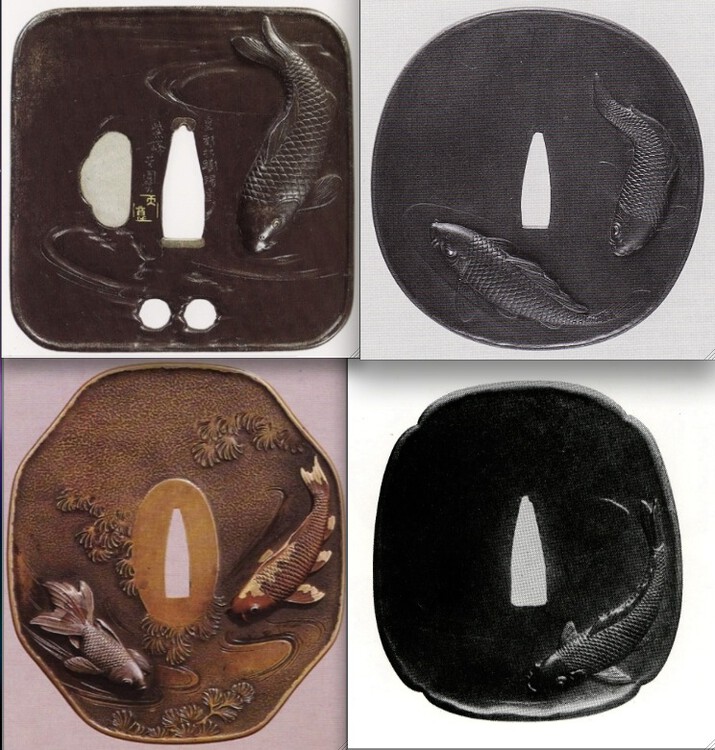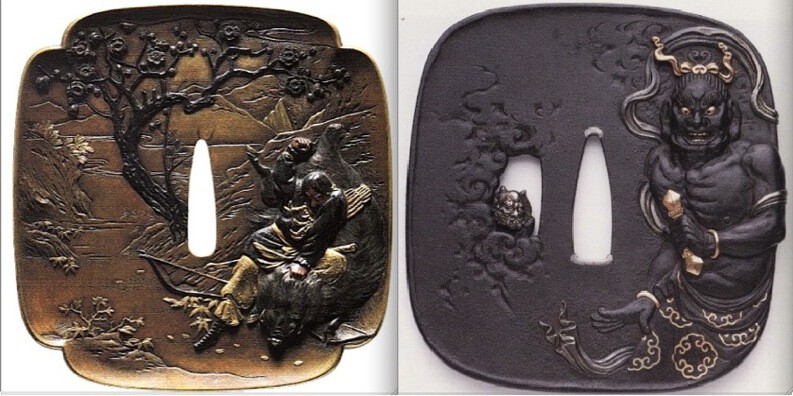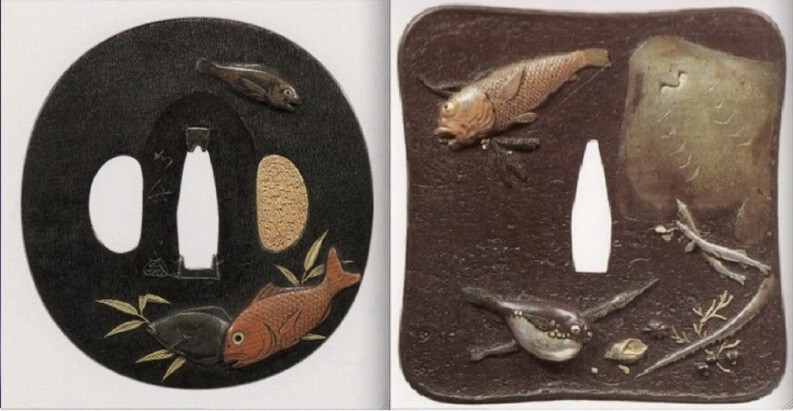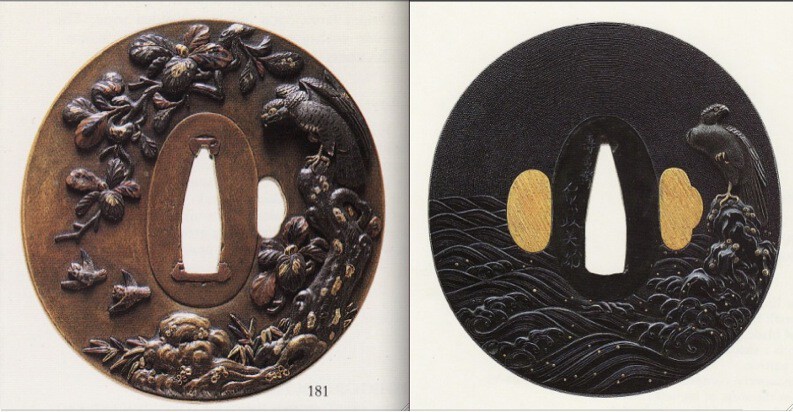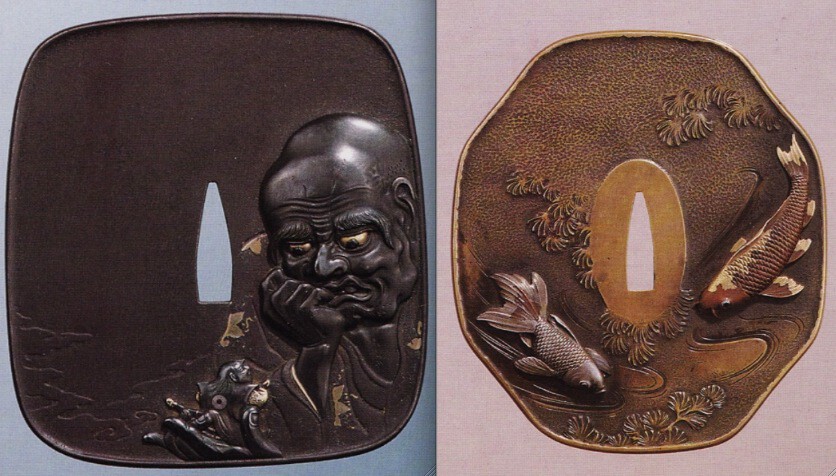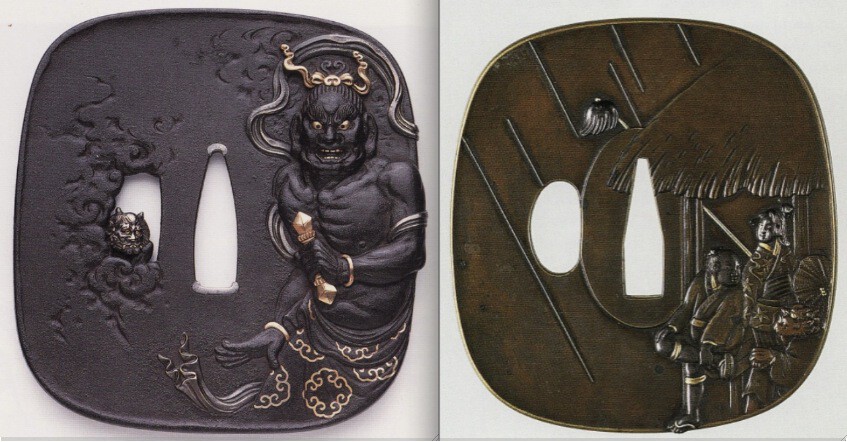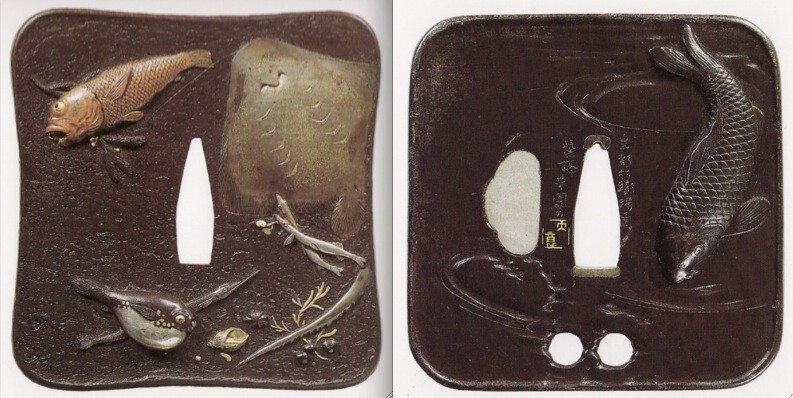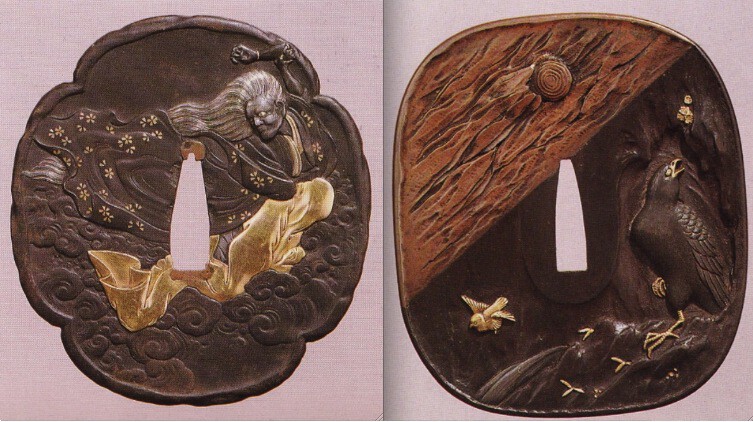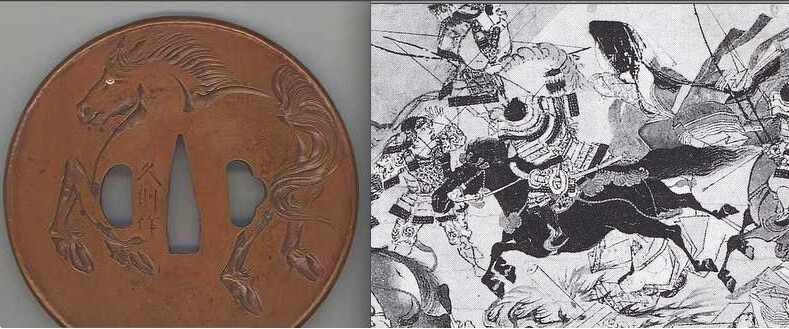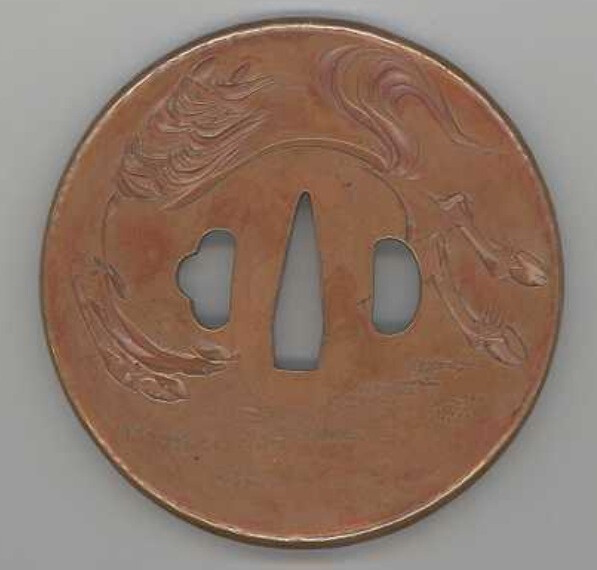-
Posts
779 -
Joined
-
Days Won
1
Content Type
Profiles
Forums
Events
Store
Downloads
Gallery
Everything posted by reinhard
-
There seems to be some confusion here: Brian, you said: "...the old iron once could have had a sentimental value....maybe passed down through the family." My interpretation of this statement was (is) like this: Parts of the koshirae were built in order to preserve this tsuba incorporating family history, sentimental values or the like. Thomas, can we agree to this: seppa are the small plates adjacent to fuchi and habaki respectively. Plates covering large areas of the tsuba in between are to be named/mentioned separately in order to prevent confusion. Apart from this, trying to return to the tsuba in question and wondering myself what I'm doing here anyway, I'd like to state: This kind of koshirae (including the treatment of the tsuba) does not suit basic principles of workmanship predating Meiji-period. In fact, the whole assembly looks like so many pieces I've seen, dating from Taisho and early Showa-period: low class objects assembled in a careless way. Some of them "modified" even later. There have been many misunderstandings and misinterpretations on NMB as far as koshirae are concerned. In order to get a review and to argue on common ground, I strongly recommend this book (including Meiji-period koshirae) for a starter: reinhard
-
Thomas, it is definitely not a seppa. It could be the soft-metal plate covering the back-side of the tsuba, but then: why putting it there while taking this picture and why is it of exactly the same color and structure like the seki-gane? Maybe this is just a rare coincidence, but even if it is: adding all features and considering the very poor workmanship of most parts of this koshirae, the idea of this tsuba being an improved heirloom is quite far-fetched to say it politely. I can't imagine you are you considering this, are you? reinhard edit: Lee may be right. I was still writing while he had posted already. Nevertheless I can't see any evidence for this "enriched" tsuba being a treasured heirloom. Overall quality of all parts is just too bad. reinhard
-
I forgot: What about this very poor photo-shop job, adding a seki-gane where there is none? (see the part within the frame and compare it with other examples from the same post). - Oh, and by the way, the tsuka-ito looks quite new and was wrapped by an amateur. Diamond-shapes are beyond Japanese professionalism. reinhard two days from now tomorrow will be history...? Are there some more cookies?
-
Using the same peculiar cherry-blossom punch for seki-gane and seppa is.....peculiar. Furthermore there seem to be traces of black paint on the seppa. Rokusho (chemical agent used for turning shakudo's natural color into black) does not leave traces like these on copper when handled professionally. reinhard just one day from now my talk of today will be the talk of yesterday...or something like that. I can't remember precisely, but the Chinese fortune cookie tasted great.
-
It seems you have made up your mind a long time ago. Maybe too long ago. The initial purpose of this thread was: Many attempts have been been made in the past in order to explain, analyze, evaluate mutual efforts between Japanese and Western culture and aesthetics. Many studies exist as far as fine arts are concerned, but decorative arts were neglected to a major extent. A lot of work and research has been done in order to explain and to illustrate differences and principles of Japanese works of art from yamato-e to ukiyo-e and their influence on Western arts, as well as the influence of Renaissance paintings, Dutch masters and pre-Raffaelites on Japanese aesthetics. - Since there has always been a strong link between painting and tsuba, establishing a connection is legitimate, but only to some extent. At least it is a first track, although it took us quite some time and some unnecessary quarrel to get there. My question was ( and I mean "was"): Were there basic principles in tsuba-making before late Edo/Meiji-period, comparable to those recognized in studies made on paintings and drawings. Can we name them, establish them in any way...or not? Say no and it's okay for me and I'll go on researching by myself. Great changes in Japanese aesthetics took place shortly after Meiji restauration. Are we able to build a system of understanding and categorizing them as far as tsuba are concerned, similar to the categories already established for painting, drawing...or not? Don't expect any answers from me. It just came to my mind it might be interesting to talk about it, exchanging ideas and infos. By doing so the term of Hama-mono might have been clarified a little bit. If it's "bla bla bla" to some and "nothing new" to others, we better leave it at that. Good night. reinhard
-
Thank you very much, John, for your great effort. Serving us this essay is much more than I expected. Namban-e in later 16th c. and the arrival of rangaku (Dutch sciences, i.e. medicine, anatomy, astronomy, maths, physics, botany) during 18th c. did affect Japanese artists to a lesser degree. They copied copperplate engravings from science books, but these scientific illustrations did not made a major impact on Japanese aesthetics. During Tokugawa-period Rimpa-school and, to a lesser extent, Kano-school of painting, impregnated all areas of art. Central perspective was still not in use and therefore other ways had to be found in order to emphasize the meaning and importance of particular objects within a given frame. Partition of spaces, size of objects (disregarding perspective) colors, (ground-)material, separating lines were most important when working without the 3D-effect of central perspective. After definite "arrival of the West" and the introduction of new techniques in Japan during second half of 19th c., these particular "2D-techinques" vanished in painting as well as in tsuba. - Italian painter Antonio Fontanesi from Torino was one of the most influencial teachers at the Engineering College Art School, founded in 1876, teaching there from 1876-1878. He, along with others, lead Japanese decorative and fine arts into a new era. One may regret this or not. This is not what I'm interested in. I would still like to stick to tsuba, for this is Nihonto message board. What can be considered important in works of Edo-period art is the neglect of individuality in human faces. They look mostly uniform to some degree. There is a fundamental difference between Western and Japanese art as far as the individuality of the human being is concerned. Does this change of perception manifest on tsuba made during Meiji-period as well? Not answering questions like these, but collecting new ideas was my intention. If it's "bla bla" to some, who cares. Thanks again, John. BTW, this is the famous painting by Takahashi YUICHI mentioned in the essay. reinhard
-
I didn't mean to interfere with your discussion of KANESADA's mei, but it is wasted on a nakago like this. One can save a lot of time and energy starting with the more obvious and simpler facts instead of going straight into subtle details. - It is the same with blades. It's better to start with looking at the sugata instead of searching for utsuri. reinhard
-
John, you are correct as far as my preferences are concerned, but my particular favouritism is not supposed to be the measure for anything. I am considering myself capable of seeing beyond my own personal preferences. My perception therefore might not be as particular as you may think. reinhard
-
Dear Jacques and Eric. Before going into the matter of shodai and nidai "Echigo no Kami KANESADA" and subtle details of mei, you should consider absurdities like this: ....nen hachi gatsu gatsu (!!??!!) Now, what is this supposed to mean in connection with an almost illegible, deliberately deformed and deteriorated nengo? Was KANESADA stammering while chiselling the nengo? - Any bells ringing? reinhard
-
As far as I'm concerned, traditional Japanese aesthetics don't need to fit formulaic derivatives. They were oscillating between exuberance and austerity from early days on, experimenting with all kinds of design, materials and techiques; but underneath there seems to have been a common ground all these attempts took place on. During later 19th century this "native" ground was dramatically extended. - Formula defining Japanese aesthetics probably exist, but I will certainly not be trying to name them or even to establish them. It just came to my mind, there might be some criteria defining a particular Western element in many works of decorative arts made during 2nd half of 19th century in Japan, especially tsuba. With a limited amount of time at my hands, I can't go any further. No, It can't. That's up to you to decide, but you better not consider me a simple mind. regards reinhard
-
Gentlemen, thank you very much for participating. Those of you criticizing me for offering an opinion only are right of course, but like I said: this thread was never meant to be a lecture (for which I'm not competent anyway). I do respect many of your points of view differing from my own, but I won't provide you with pics and examples illustrating your opinions. You must do that yourselves, if you please. Finally I would like to present 4 tsuba depicting Koi, made during second half of 19th c., reflecting some of my theories. top left: made by Shiho HOEN around 1870. The Koi is of big size. The artist didn't feel comfortable with the empty space left on the plate and added some wavy fillings, but they are badly designed, unnecessary, carelessly executed. This tsuba is a half-hearted compromise between Japanese aesthetics and Western expectations. bottom left: signed: TOSHIMASA, later 19th c., 10.4cm vertical diameter. This tsuba is the perfect example for an eye-catcher, trying to get the attention of a lesser educated Japanophile: big size, bright and shiny colors, some elaborated details; but all in all it is the kind of pompous "Kitsch" traditional Japanese aesthetics do not display. top right: described as "NATSUO-school". Meiji-period. The Koi are nicely executed (sorry for the bad pic) and design is pretty well-balanced, although the Koi appear somewhat fat and fleshy, deliberatly trying to fill the frame. I imagine Westerners with a more refined taste enjoying this tsuba. Made for export, but not giving tradition away. bottom right: This is a tsuba by Kano NATSUO (again sorry for the pic). Design is perfectly in accordance with refined principles of Japanese aesthetics. Well-balanced it is, without any unneccessary ballast. Instead of loading the empty space(s) with all kind of stuff, NATSUO trusted in the supreme quality of ground material and finish. Kano NATSUO was designated an artisan of the imperial household. Along with Goto ICHIJO he set the standards for refined Japanese taste during later 19th c. - This particular tsuba is the very opposite of what I'd call a "Hama-mono" although it was made during later 19th century. reinhard
-
Another "Western" feature of many Meiji-period tsuba is a theatrical exaggeration. This is particularly obvious when design was meant to depict motion. In most cases they are displaying a "dead serious" attitude when it comes to "drama and adventure". Earlier approaches to the same topics dealt with the subject with a sense of dignity and understatement. At least they showed some originality and/or a sense of humour. Meiji-period tsuba often have this "Hollywood-esk" quality that makes them look ridiculous. Two examples to illustrate my point of view: Nio-O, traditionally depicted with super-human muscles in order to visualize his divine nature, is reduced to an eye-rolling clown; staring at the viewer frontally, ready to jump out of the frame and looking like a steroid-crazed runner of the 4x100m at Olympic games. - The other tsuba is telling the story of Nitta no Shiro killing a giant boar. It looks like a screen-shot from a silly movie. There is a tsuba by Otsuki MITSUOKI, dating from late Edo-period, depicting the same topic in a much more dignified way, but I could not find it quickly. reinhard
-
BTW, Mr.Trotter, it was "cheap hooker" I said, not "old one". Although I'm not perfectly familiar with the English language, I'm trying to choose my words carefully, even if they sound provoking to your ears. Please do not quote me falsely according to your own interpretation. Thank you. reinhard
-
Here's some more mind-food in order to elaborate Japanese and Western principles of aesthetics as far as tsuba are concerned: I'll start with two tsuba displaying the "fish theme". One of them is a very famous tsuba displaying a "traditional approach". The other one is the tsuba made during Meiji-period you have already seen. Apart from details of craftsmanship, the use of space available on the plate for design is quite different. In order to illustrate this point of view, I'll give you another example, comparing the "hawk on a rock"-theme on a tsuba made by Ishiguro MASAYOSHI to an "Ishiguro-style" tsuba dating from Meiji-period. I'm aware of the fact that most samurai could not afford buying from top-level fitting-makers, but that's not what it is about. reinhard
-
This thread is not supposed to arrive at any final conclusion. It is about collecting ideas and infos. First of all, my examples posted here are from Western collections. It is quite difficult to find tsuba like these in Japan (or Japanese books) that have not left the country in the meantime. You will never find them in the legacies of Daimyo families. In Japan their prestige was obviously quite low at the time of their manufacture. Why? Some of them were quite skillfully executed, but educated Japanese didn't like them. Some of the older schools and masters made spectacular tsuba as well. What are the differences? After a while you get a feel for them, but putting this sentiment into words and creating criteria is not easy. That's why I started this thread. Here are a few ideas to consider and to discuss (this is not supposed to be a lecture): - traditional Japanese design "knows when to stop". There should be a balance between empty spaces and the one(s) occupied by actual design. Some Meiji-period tsuba are crowded and (over-)loaded with too many things. The tsuba with fish and ray is a good example. - the motto "the bigger the better" might suit McDonald's and simple minds, but is contradictory to Japanese aesthetics. This goes for the size of plates as well as for the space occupied by design. - colors should always be in harmony as well as the finish of the ground material. Japanese favoured ones and disliked others, but most of all: they should go on well together. Many Meiji-period tsuba are lacking this quality. Flashy "bling bling stuff" and mismatching colors are as far from the "real thing" as they can get. Well-made tsuba are glowing, not shining. - understatement: hard to believe, but this was a real quality before Meiji-period. Even spectacular works by Ishiguro-school artists, Mito KinKo and others are not displaying their true qualities at first sight. Many Meiji-period tsuba however are pretenders at first sight. Trying to capture the eye, but disappointing at second sight. BTW I had to go quite deep into my library to find (confirmed) tsuba of Meiji-period illustrating my point of view. Please stick to these examples unless you are sure of what you are posting. Otherwise confusion is sure to come. Thank you. reinhard
-
Poor Tim accidentally got in the line of fire with his "HISANORI"-tsuba. The topic of Hama-mono and foreign influence in Japan during later 19th c. has not been circumstantially discussed yet on NMB. The topic has been taken somewhat controversial here and it has been neglected by scholars in East and West for a long time. It would be nice to start a talk about works made for export and their importance for understanding Japanese aesthetics and Western preferences. When my interest in Japanese arts started some 20 years ago, I was fascinated by mere skills at first, attracted by designs I felt familiar with. - By now I'm appreciating works of ToSho artists as well as works of Kano NATSUO. They are all in line with Japanese principles of aesthetics, sometimes stretching them, but never giving them away. On the other hand there are works by (technically) skilled artists just calling for (Western) money, renouncing roots and dignity. Some of their works look like "old Japan goes Walt Disney". Over-sized plates, overloaded with flamboyant eye-catchers; rolling eyes, wide open, watching frontally at the viewer; shiny colors etc. The Japanese anticipated very quickly. Many of these works remind me of a cheap hooker abandoned by all dignity and any sense of humour. What do you think? Attached are some examples obviously made for export. Some of them with a false mei. reinhard
-
Dear Ford, The recently presented "sho" tsuba is illustrating my point very well, don't you think? I'm looking forward to argue with you about principles of Japanese aesthetics (no sarcasm). See you on the road. best regards reinhard
-
You may see it that way, Ford. This might be the trouble with any debate about sense of aesthetics. To me design and execution of this particular tsuba look plain, uninspired, boring. It is also a pompous and pretty spectacular tsuba at first sight, quite skillfully executed, just the way most Westerners like(d) it. We could go on discussing this endlessly, but I'd prefer not to. If it starts with a 13th century picture scroll where will it end? Links to Japan's culture and arts of a thousand years, just to prove me wrong? I won't play the game on the basis of this particular tsuba. Obviously it is supposed to be the only remaining example of a forgotten master. Your quote posted here sounds rather disrespectful to me, like another one mentioning the advantages of knowing about Japanese paintings, implying I don't know anything about it. Well, you're wrong. See, I really acknowledge your technical skills, but apart from that I'm not one of Ford Hallam's disciples, bowing their heads to the ground as soon as they hear their master's name. I don't expect you to agree with me in any particular question, but I presume a minimal respect given. I agree to disagree one more time. Let's leave it that. reinhard
-
Show me any tsuba, as pompous and theatrical as this one, predating Meiji-period and this discussion will eventually start to make sense. A "HISANORI"-mei on it would be nice to see as well, adding at least some credibility to former statements. Go on, convince me. I wonder if this talk is still about this particular tsuba or just about establishing profiles? reinhard
-
Ford, Actually there are remarkable differences and they are making the difference between Japanese aesthetics and Western-orientated design. Hardly any artist working for export during second half of 19th century was able to bridge these poles succesfully without betraying one principle or the other. If you don't mind I would like to stick to Tsuba and their very particular demands. Widening the topic to (Western) images and (Japanese) picture scrolls won't get us anywhere. Show me any (confirmed) tsuba by untraceable (sic!) Hisanori or any other Tsubako with a similar design and workmanship predateing late Bakumatsu or Meiji-period and I will bow. This tsuba fits all criteria of late work made for export. Size, design, execution, a dubious, untraceable mei etc. It's quite obvious, don't you think? regards reinhard
-
Well, I do. Even more so when looking at the reverse. Design looks rather "modern" and there is hardly anything I can connote with works predating Bakumatsu or Meiji-period. The size of the plate is somewhat oversized which is a typical feature of Hama-Mono. This is not necessarily a bad thing, for some tsuba made for export were crafted by highly skillful artists. Lacking raw materials or the like, Japan depended mainly on traditional craftsmanship when it was entering global markets during later 19th century. When the days of the samurai ended, some of the artists and craftsmen found a new market, but the new customers were different. Instead of samurai and local merchants, Westerners had to buy their products. Guess what happened. This particular tsuba fits in there perfectly to me. Skillfully executed it is, but quite far from any traditional sense of aesthetics. reinhard
-

Stepping away from Moderation
reinhard replied to Ted Tenold's topic in General Nihonto Related Discussion
Fare thee well, Ted. It was a pleasure to meet you at Token Ichi two years ago and I hope we will meet again on the road. Thanks. reinhard -
I agree with Ted. Western expectations (size, design, proportions, colour etc.) combined with traditional Japanese skills and craftsmanship automatically lead to Hama-Mono: things made for export during Meiji-period. Everything about this tsuba is pointing this way. It looks like a well executed piece of work, but somehow far from Japanese sense of aesthetics. Just one question: What are the measurements of this tsuba (horizontal and vertical diameter)? reinhard
-
Forget about Taikans and hi-res pics. No serious collector will buy a KIYOMARO blade before seing it in his own hands. I've seen about a dozen of his best blades in hand, including the one he made for Kubota Sugane, presently Juyo Bijutsuhin. You are losing yourselves in virtual, meaningless discussions. reinhard
-
Hi George, Basically I agree with your statement, but since NMB and sword trade are almost impossible to separate, I'm trying to differ between professional dealers guided by commercial interests only and amateurs. I'm not willing to do homework for the former but am ready to help the latter. The amateur can be an enthusiastic beginner as well as an overcharged heir knowing nothing about NihonTo at all. He has a right of getting a reasonable answer as well. I will not provide him with answers unasked, but I don't care either if my post on NMB gets to him by other ways. Personally I'm favouring more transparency of personalities and their intentions on NMB and a separation of interests here, but this is not my cup of tea. Brian and his team have to decide. Since informations gained from NMB are dispersing into business through all sorts of channels, inside and outside of NMB have become very difficult to discern. In the end it seems only natural to me that everybody is trying to get advantage from this board. Why protect some ("quiet, knowledgeable bidder") and leave the others? regards reinhard


